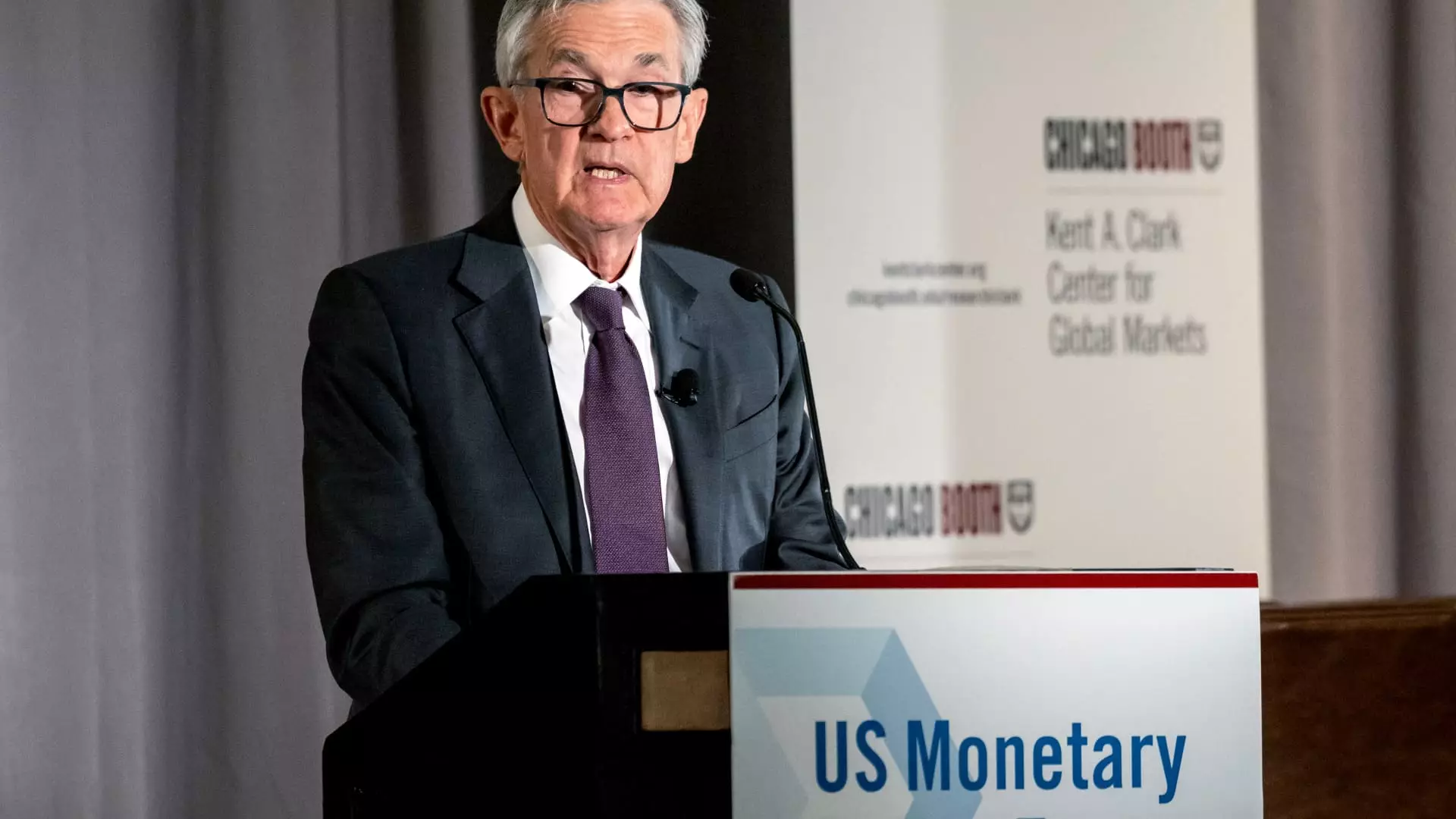In a climate brimming with uncertainty, the Federal Reserve has taken a deliberate and cautious stance under the leadership of Chairman Jerome Powell. As President Donald Trump’s administration advocates for economic policies marked by aggressive tariffs and sweeping reforms across various sectors, the Fed’s restraint raises pertinent questions about the wisdom of such a wait-and-see approach. Ratcheted up tensions in trade, immigration, and regulatory frameworks have created a complex environment that the Fed seems reluctant to navigate head-on, preferring instead to wait for the dust to settle.
While patience is sometimes a virtue in governance, it can also devolve into bureaucratic paralysis. Powell’s comments reflect a Federal Reserve that is somewhat out of touch with the expectations of the markets, where traders are actively pricing in interest rate cuts due to anticipation of economic instability. It appears the Fed is erring on the side of caution, potentially dismissing the clear signals that suggest urgency is not just necessary but crucial for economic wellbeing.
Mixed Signals: The Conflict Between Market Sensing and Fed Directive
The divergence between market expectations and the Federal Reserve’s current stance is striking. Despite a prevailing narrative that inflation is on an upward trajectory due to Trump’s protectionist policies, Powell’s emphasis on a “wait for greater clarity” approach might render the Fed ineffective in addressing swift economic shifts. Indeed, the latest market behavior—pricing in a possibility of rate cuts—reflects a more responsive and arguably pragmatic worldview, contrasting sharply with Powell’s measured wait for signals that could be misinterpreted as indecisiveness.
What results from such mixed signals is a compounding uncertainty, where businesses and consumers are left in a state of apprehension. The Fed’s indecision may lead to a loss of credibility, with stakeholders beginning to question the central bank’s ability to manage the economy adequately during turbulent times.
Inflation Woes: The Compounding Impact of Uncertainty
While Powell asserts that the economy is presently in a “good place” and inflation is moving towards the Fed’s target of 2%, reality speaks in a different tone. The current inflation rate of 2.5%—while appearing manageable—masks underlying complexities exacerbated by tariff discussions. The Fed risks underestimating real inflation drivers as public sentiment continues to teeter on doubt about future price stability, largely influenced by the rapidly shifting landscape of U.S. trade policies.
It’s worth noting that Fed officials should not merely forecast based on historical data; they must also adapt to real-time perceptions and potential inflationary pressures ignited through policy changes—particularly those driven by political shifts. A more proactive approach is critical to moving beyond mere observational commentary towards strategic interventions that could shape future economic resilience.
The Labor Market: A Stark Contrast Amid Economic Strategies
Meanwhile, the labor market displays signs of strength, with job gains illustrating a solid recovery. Yet we must question whether this strength is sustainable under the current administration. Powell’s almost breezy assertion that wages are growing successfully at a faster pace than inflation sounds reassuring but should incite scrutiny rather than complacency. With average hourly earnings seeing a slight uptick, one cannot ignore the broader questions about job security, living wages in the face of rising costs, and whether growth can last.
In a center-right context, the apparent dichotomy between a flourishing job market and the unsettling backdrop of policy uncertainty calls for a reevaluation of governmental strategy. Are we prepared to safeguard this fragile labor market from the corrosive effects of erratic trade policies? Or are we gambling on a tide that may not favor our traditional economic engines?
A Call for Proactivity in Unprecedented Times
In this portrait of hesitation versus action, the Federal Reserve’s current policy approach underlines an opportunity that they seem unwilling to seize. As uncertainty looms large, the central bank should lead rather than react by implementing policies that preempt potential downturns. In this era, marked by rapid change and heightened tensions, the importance of decisive leadership in economic policy cannot be overstated. We stand at a crossroads where the choices made today will echo through fiscal cycles for years to come, and the question remains: will we be bold enough to navigate uncharted waters?

